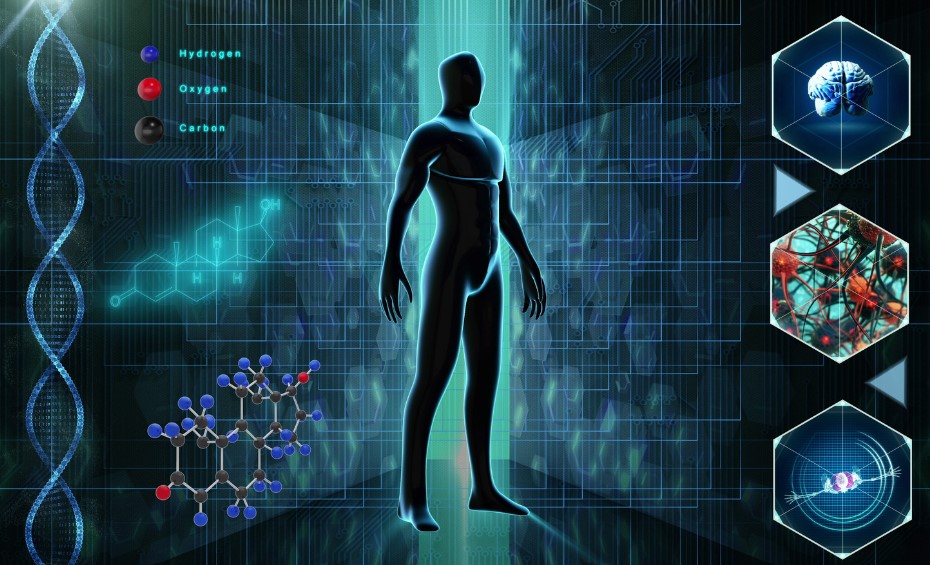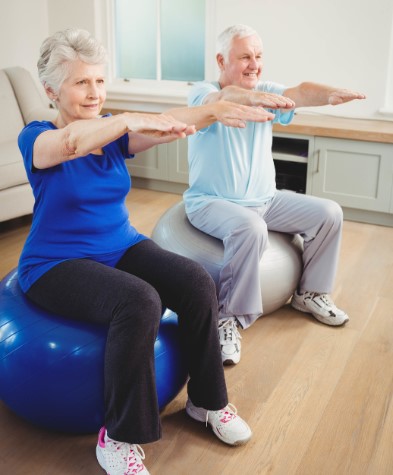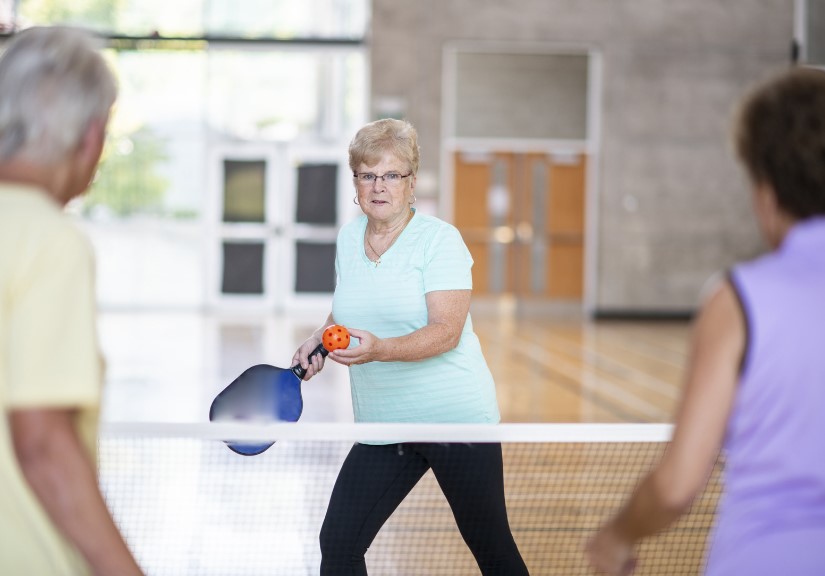Imagine the human body as an intricate, beautifully engineered machine designed to move and adapt. As we age, this machine, like any other, requires maintenance to function optimally.
The key to this maintenance?
Movement and exercise!
In this article, we’ll delve into the wonders of how exercise not only maintains but enhances the various systems of the aging human body. From the rhythmic beating of the heart to the sharpness of the mind, physical activity positively influences every aspect of our physiology!
Let’s journey through the body, exploring each primary system, its response to exercise/movement/activity, and how movement can be a fountain of youth for our aging selves.
The Musculoskeletal System:
The musculoskeletal system is our body’s scaffolding, providing support and enabling movement. This system faces challenges like reduced bone density and muscle mass as we age.
Exercise Benefits
Regular physical activity, such as resistance training and weight-bearing exercises like walking or jogging, fortifies our muscles and bones. These activities are not just about building strength; they’re about maintaining the functional independence that comes with a sturdy frame and resilient muscles.
Recommendations
Incorporate strength training exercises at least twice a week, focusing on major muscle groups. Activities like gardening or carrying groceries also count. Remember, every bit of movement adds up!
Sedentary Lifestyle Effects
A sedentary lifestyle is the nemesis of musculoskeletal health. Lack of movement leads to muscle weakness, joint stiffness, and bone fragility, making everyday tasks daunting and increasing the risk of falls and fractures.
An active senior stands tall and moves with ease, enjoying a life filled with activities they love. In contrast, a sedentary individual will struggle with simple tasks, their world shrinking as their body’s capabilities diminish.
The Cardiovascular System:
Our heart and blood vessels form a vital network, circulating life-sustaining blood throughout our body. Keeping this system in top shape is critical as we age.
Exercise Benefits
Cardiovascular activities, such as brisk walking, swimming, or cycling, are like a tune-up for the heart. These exercises lower blood pressure, reduce cholesterol levels, and improve heart muscle strength. A healthy heart means a longer, fuller life with a reduced risk of preventable health problems.
Recommendations
Aim for at least 150 minutes of moderate-intensity aerobic activity or 75 minutes of vigorous activity each week. Even daily brisk walks make a significant difference.
Sedentary Lifestyle Effects
Inactivity puts undue stress on the cardiovascular system. High blood pressure, heart diseases, and strokes are far more likely in those who don’t engage in regular physical activity.
Active seniors enjoy a robust cardiovascular system, their hearts beating strong and steady. In contrast, those leading a sedentary life face a higher risk of heart-related issues, a threat to their longevity and quality of life.
The Respiratory System:
Our lungs, the bellows of life/energy/vitality, require regular exercise to function efficiently, especially as we age.
Exercise Benefits
Aerobic exercises like walking, dancing, or swimming enhance lung capacity and improve respiratory efficiency. This means a better oxygen supply to your body, which translates to more energy and vitality.
Recommendations
Include activities that increase your breathing rate. Even singing or playing wind instruments can be beneficial for your lungs!
Sedentary Lifestyle Effects
A sedentary lifestyle leads to a decline in lung function, leaving the body starved of the oxygen it needs to thrive.
An active senior breathes deeply and effortlessly, enjoying a vitality that radiates from within. In contrast, a sedentary individual may find themselves short of breath during even mild activities, with their energy levels consistently low.
FACT: “Over the past five years, the impact of smoking on global health has been profound and far-reaching. According to the World Health Organization (WHO), tobacco kills more than 8 million people each year, a staggering figure that includes both smokers and non-smokers exposed to second-hand smoke. This number represents a significant global health challenge, as tobacco use remains a leading cause of death and illness worldwide, superseding COVID-19.”

The Nervous System:
The nervous system, our body’s communication network, benefits greatly from physical activity, which can keep the mind sharp and spirits high.
Exercise Benefits
Regular physical activity has a profound impact on brain health. It boosts cognitive function, slows neural degeneration, and enhances mood and sleep quality.
Recommendations
Engage in activities that challenge your coordination and balance, like tai chi or yoga. These not only work your body but also stimulate your brain.
Sedentary Lifestyle Effects
A lack of physical activity can lead to cognitive decline and mental health issues. The brain, like muscles, needs to be exercised to remain sharp, focused, and in complete control!
Active seniors enjoy clarity of thought and emotional stability, and their minds are as agile as their bodies. In contrast, a sedentary lifestyle may lead to a foggy brain and a somber mood, affecting all aspects of life.
The Digestive System:
Our digestive system relies significantly on body movement to function optimally. This crucial system extracts life-essential nutrition from the foods we eat, but the efficiency in which it operates is hinged on the increased blood flow and muscle action that comes from movement.
Exercise Benefits
Regular movement aids digestion and prevents common age-related issues like constipation. Exercise keeps the digestive tract in motion, promoting a healthy gut.
Recommendations
Incorporate light walking or stretching after meals and throughout the day to aid digestion. Even gentle movements can have a positive impact on your gut health.
Sedentary Lifestyle Effects
Inactivity can disrupt digestive health, leading to discomfort and a variety of gastrointestinal issues.
Staying physically active will allow you to enjoy a comfortable and efficient digestive process. At the same time, a sedentary individual may struggle with digestive discomforts, impacting their overall well-being and energy balance.
The Endocrine System:
The endocrine system regulates hormones and responds positively to physical activity, preserving and enhancing function.
Exercise Benefits
Regular exercise helps maintain a healthy weight, regulate blood sugar levels, and enhance insulin sensitivity. This is especially important for preventing or managing conditions like type 2 diabetes.
Recommendations
Mix aerobic and strength training exercises to improve insulin sensitivity and hormonal balance. Even moderate activities like brisk walking can be highly effective.
Sedentary Lifestyle Effects
A sedentary lifestyle can lead to weight gain and insulin resistance, disrupting hormonal balance and increasing the risk of diabetes.
This maintains a harmonious endocrine system for those who exercise regularly, enjoying increased energy and vitality. In contrast, a sedentary lifestyle can lead to hormonal imbalances, affecting overall health.
Nutritional Considerations
Nutrition plays a pivotal role in complementing an active lifestyle. A balanced diet rich in healthy proteins, complex carbohydrates, healthy fats, and hydration supports the increased demands of an active body while providing your body’s systems the resources necessary to operate optimally.
As a rule, seniors should focus on nutrient-dense foods to maximize the benefits of their physical activities.
Adverse Habits
Avoiding or minimizing habits like smoking and excessive alcohol consumption is essential. These habits can significantly undermine the benefits of exercise, especially impacting respiratory and cardiovascular health.
The journey through our body’s systems reveals a clear message: movement is the key to aging well. Regular exercise preserves and enhances bodily functions, keeping seniors healthy, independent, and vibrant.
The choice is clear – for a life full of vitality and joy, we must “Fire It Up!” and embrace the power of movement. Let’s make each step, each breath, and each heartbeat count.
In this engaging and informative exploration, we’ve seen how every system in our aging bodies responds positively to the magic of movement. Exercise, in its many forms, is not just a routine; it’s a celebration of life at every age.
Joe Carson B.S. NASM-CPT/FAS/CN
Master Trainer/Functional Aging Specialist/Certified Nutritionist
Twenty-First Century Aging





